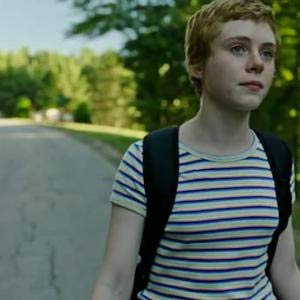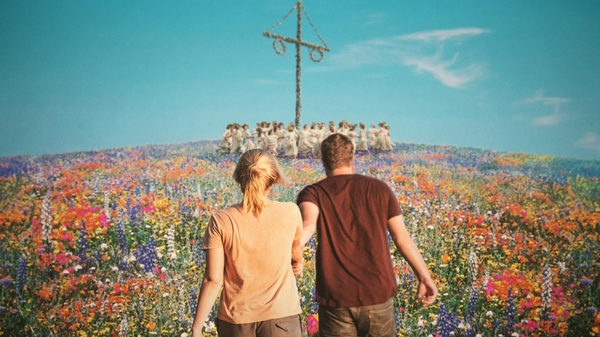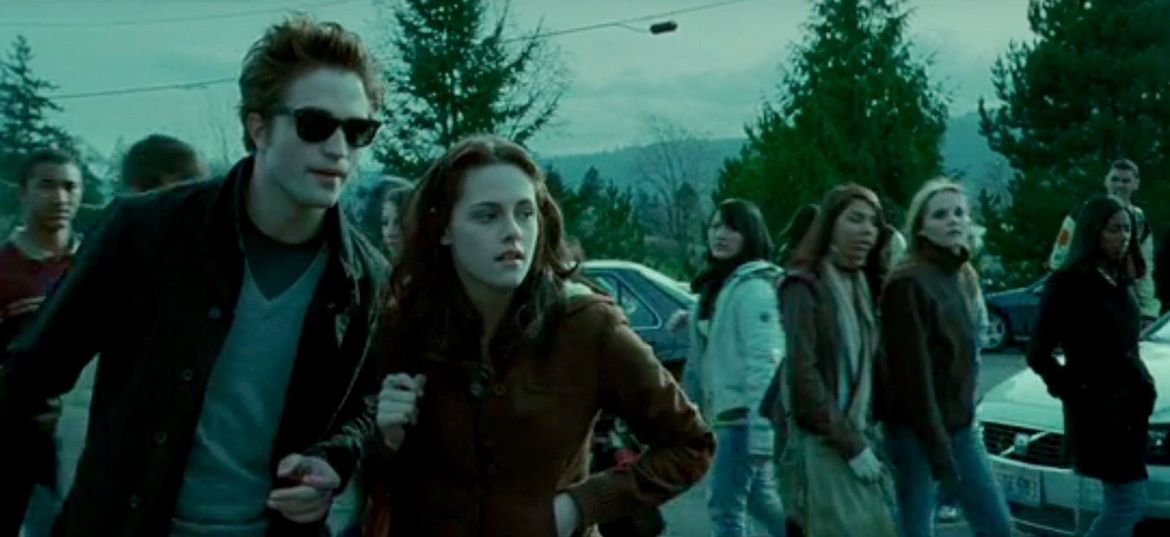I was about halfway through watching
Sharp Objects when the idea for this essay struck me. After realizing Sophia Lillis was playing the young versions of both Camille Preaker and Beverly Marsh, I started to notice similarities in the experiences of their characters; two women traumatized in their childhoods, returning as adults to their small hometowns to face those traumas head on. I initially wanted to write about ‘place’, and the way that a horrific event can linger, or repeat itself, in the place where it happened, focusing on the similarities between Derry and Wind Gap, and the differences between different characters’ responses to the trauma they suffered in those towns. However, after finishing
Sharp Objects, and after seeing the second chapter of
It, I realized that Derry or Wind Gap could really be anywhere. Evil does not originate from a place, but from within people. Leaving Derry does not do Beverly Marsh any more good than leaving Wind Gap did Camille Preaker. If there is anything these films have in common, it is how they show that violence, trauma, or evil can follow a person anywhere.
 |
Lillis as Camille Preaker
|
 |
| Lillis as Beverly Marsh |
Before I get into it, however, there are a couple of comments I need to make about
It: Chapter Two. Firstly, I didn’t particularly like the film. I felt the first
It film was drastically more cohesive, and while neither movie was particularly scary, made a much better horror film.
Chapter Two, unfortunately, felt more like a sci-fi action comedy with jump-scares. I specifically had serious issues with the film’s tone and how character arcs were handled/not resolved. While I have not read Stephan King’s novel, I am curious to find out how that text differs tonally from its on-screen counterpart. Secondly, and most importantly, I did not feel like this adaption updated some of its content in a way I would have expected to see in 2019. The attack on the gay couple reads differently set in 1984 as it is in the book, than it does set in 2016 in the film--especially considering how horrifically the violence of this scene was portrayed. And while I would not have asked for this scene to be cut entirely, I would have preferred for the film to have redeemed the undercurrent of homophobia in the storyline more successfully. While revealing to the audience that Richie had been in love with Eddie since childhood was an appreciated gesture, it was apparently too subtle for a surprising number of straight audiences to even pick up on. Furthermore, the depth of Richie’s internalized homophobia, as well as the fact that what Pennywise calls his “dirty little secret” is never revealed to the Loser’s Club in any explicit way, makes the film’s attempt to say “Don’t worry! We’re not homophobic!” fall more than a little flat. I could probably go on and on about this for pages, but since sexuality is not the theme in this film I actually wanted to address, I will move on.
The list of similarities between Beverly’s experience and that of Camille in
Sharp Objects is pretty astounding. Both women were abused by a parent, and both dealt with that trauma in extremely self-destructive ways. Camille copes through excessive drinking and self harm, while Beverly never truly escapes her past by marrying a man who treats her almost exactly like her father did. When she returns home however, we see where her journey deviates from Camille’s. Most of the Losers have an individual scene where they conquer their demons, and in Beverly’s she finds herself locked in a bathroom stall, much like that from the first film, which fills with blood while her various childhood tormentors try to break in. While I understand how meaningful it is to have her and Ben save each other in this scene, I would have liked to see Beverly combat her past on her own. It is her personal inability to break out of the cycle of violence her father initiated that leads her to end up in an abusive relationship, and rather than simply being saved from it by a ‘good man’, Beverly needed reconcile these issues for herself outside of a romantic context involving Ben. Similarly to the ‘damsel in distress’ plotline of the first film, Beverly is stripped of much of her agency, leaving her dependent on boys who often don’t seem to view her as more than an object of their romantic whims.
To return to
Sharp Objects, there is an energy much like ‘It’ that resides in Wind Gap. While it may not manifest literally in the form of a dancing clown, the influence of ‘It’ lives inside many of the residents of Camille’s hometown—a personification of the abject impulses within human beings that drive them to harm one another. For many ‘It’ is passed down like a disease from abuser to victim, forcing its vessels to reenact the trauma they experienced. However, rather than focusing on these traumatic events themselves,
Sharp Objects addresses the aftereffects and repercussions of those acts on the people who suffered them, as well as the people who stood by and watched. When Camille returns to her hometown, she has a very literal demon to conquer, rather than an entity like Pennywise. Like Beverly, Camille returns home hiding the physical marks of the pain she has suffered, and it is only through acknowledging and accepting that her mother is responsible for her sister’s death, as well as her own abuse, that Camille is able to move on from her past. While most characters have varying degrees of knowledge of what happened to Camille’s sister Marian, or to Anna and Natalie, no inhabitant of Wind Gap was truly spared. While those directly involved, namely Amma and Camille, find outlets to re-enact the violence that was done to them by their own mother, Camille takes that trauma out on herself, while Amma follows in her mother’s footsteps, killing girls her age, albeit in a much more gruesome fashion that Adora’s rat poison.
While ‘It’ does not literally exist in the world of
Sharp Objects, it is clear that similar questions of what makes people do bad things to one another are being asked by both films. Derry and Windgap share a lot of common threads: repeated cycles of violence, missing/dead children, and abusive, unhelpful, and incompetent adults. However, there is one particular difference that I find most fascinating, one defining characteristic that separates the perpetrators of violence in these two towns. The killers in
It are men, and the killers in
Sharp Objects are women. This distinction creates an interesting parallel between Henry Bowers and Amma Crellin in particular. Bowers was abused by his father, and went on to abuse, and later attempt to kill, members of the Loser’s Club, while Amma was abused by her mother, and went on to kill three of her friends. I find it extremely interesting that both cycles of violence remain within the gender of these two characters. While Bowers is ultimately killed by the Losers, Amma’s true nature is only revealed in the final seconds (as well as a mid-credits scene), as the killer that Wind Gap had been searching for throughout the entirety of the series. While it comes as a shock that Adora was not actually responsible, having Amma exposed as a killer makes the prominent theme of cycles of violence lock into place.
The greatest difference between Bowers and Amma, and Beverly and Camille, is how the two sets respond to the trauma they experienced in their childhoods. Bowers and Amma externalize the violence that was done to them, while Beverly and Camille internalize it. While many of the Losers were victims of abuse, it is as if It saw a violent potential in Bowers that could be exploited, that was not present in other characters. If you cannot resist It, you become It. The same could be said about Amma Crellin. Alternatively, Camille and Beverly were required to conquer their own internal roadblocks of self-loathing in order to free themselves from their painful pasts. If there is any message that both
It and
Sharp Objects are trying to get across, it is that traumas cannot go unconfronted. You can move away from where something terrible happened, and you can try to forget, but eventually, you have to go home and "kill that f**king clown."






![Scream – [FILMGRAB]](https://film-grab.com/wp-content/uploads/photo-gallery/imported_from_media_libray/thumb/6324%20(1).jpg?bwg=1547130022)




